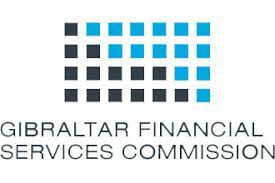Tips for creditors in a company voluntary arrangement

You must respond quickly if you’ve become a creditor in an insolvency procedure such as a company voluntary arrangement (CVA).
A CVA is a formal contract between an insolvent company and its creditors. The agreement allows a company to continue trading while repaying creditors, usually over 3 to 5 years.
You’ll find financial information and a summary of the company’s trading history in the insolvency practitioner (IP)’s proposal. The CVA proposal should also include a 3 to 5 year restructuring plan outlining how the company will:
- Benefit from the CVA
- Pay creditors every month until the debt is settled
The proposal will fail if a group of creditors who’re owed at least 26% of the company’s debt object. The director and nominee / IP need support from creditors with over 75% of the total debt value for the proposal to be approved.
If approved, the CVA will fail if the company falls into more than 2 months’ arrears on its contributions to creditors. Then, the IP will be legally obliged to start winding up the company.
The first rule of CVAs for creditors is to never accept a proposal at face value. There’s always room to substantially improve the proposal. But to do this, you must first galvanise the support of your fellow creditors.
Connect with other creditors
It’s essential that you engage and connect with other creditors to form 1 united group. This is the only way you can:
- Gain any control or influence over the proceedings
- Ensure you receive a significant dividend
The director and IP will probably be prepared to make concessions when they discover someone has been successfully canvassing votes. They may even revise the proposal to make it more attractive.
Creditors should insist on modifications to the company voluntary arrangement proposal. The 1st modification should be a request permitting creditors to replace the supervisor with a creditor-appointed IP.
Creditors’ interests are almost always best served after they’ve appointed their own IP as a supervisor.
It’s always best to seek the advice of an independent insolvency expert in these situations. They will help you devise a strategy to negotiate with the director and their IP.
Insolvency & Law can take instructions and represent your interests in discussions with the director and their IP. Additionally, we stimulate creditors in formal insolvency procedures and encourage them to become more proactive.
Understanding the winding up petition: A crucial tool
In the world of insolvency, a winding up petition holds significant importance. When a company has received a statutory demand (SD) and fails to raise…
Read MoreUrgent Call to Action: Have You Invested in Beech Holdings (Manchester) Ltd?
If you or anyone you know has invested in Beech Holdings (Manchester) Ltd, it’s time to take action immediately and get in touch. The Situation…
Read MoreBankruptcy Annulment: A Fresh Start for Financial Recovery
Bankruptcy is often viewed as a last resort for individuals overwhelmed by debt, offering a path to financial relief but also leaving a significant mark…
Read MoreCastle Trust and Management Services Ltd- The Big Problem for the Gibraltar Financial Services Commission
The collapse of Castle Trust and Management Services Ltd (CTMS) has raised serious questions aboutthe role and effectiveness of the Gibraltar Financial Services Commission (GFSC)…
Read More



